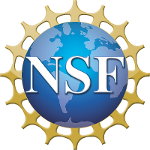Antirrhinum braun-blanquetii
Cell Line ID AB-01752-R1
Lowest Tolerable USDA Zone 5a
Drought Tolerance Tolera
Availability Medium
Order Lamiales
Family Plantaginaceae
Genus Antirrhinum
Antibacterial Genus Level
Plant Habit Herb Perennial
Plant Habitat Warm Temperate
Culture Start Material Seed
Native Range Northwest Spain, Northeast Portugal
Antiviral Citations - Seikel, M.K. et al., J. Am. Chem. Soc., 1950, 72, 5725- 5730 (Antirrhinum majus constits) [https://doi.org/10.1021/ja01168a095]
- Seikel, M.K. et al., J. Am. Chem. Soc., 1955, 77, 4622- 4624 (Cernuoside, Aureusin)
- Farkas, L. et al., Chem. Ber., 1961, 94, 2221- 2224 (Cernuoside, synth)
- Batterham, T.J. et al., Aust. J. Chem., 1964, 17, 428- 439 (pmr) [https://doi.org/10.1071/CH9640428]
- Farkas, L. et al., Chem. Ber., 1964, 97, 1044- 1046 (synth, struct, 6-glucoside, Rengasin)
- Harborne, J.B., Phytochemistry, 1966, 5, 111- 115 (Cernuoside, Aureusin, occur) [https://doi.org/10.1016/S0031-9422(00)85088-8]
- Harborne, J.B., Phytochemistry, 1967, 6, 1643- 1651 (occur, Cernuoside) [https://doi.org/10.1016/S0031-9422(00)82897-6]
- Clifford, H.T. et al., Phytochemistry, 1969, 8, 123- 126 (occur) [https://doi.org/10.1016/S0031-9422(00)85804-5]
- Hastings, J.S. et al., J. Chem. Soc., Perkin Trans. 1, 1972, 2128- 2132 (struct, 6-glucoside) [https://doi.org/10.1039/p19720002128]
- Deshmukh, S.W. et al., Indian J. Chem., 1974, 12, 893 (Rengasin, synth)
- Ogiyama, K. et al., Phytochemistry, 1976, 15, 2025 (Melanorrhoea constit, 4-Me ether)
- Markham, K.R. et al., Phytochemistry, 1978, 17, 159- 160 (6-glucuronoside) [https://doi.org/10.1016/S0031-9422(00)89707-1]
- Markham, K.R. et al., Phytochemistry, 1978, 17, 911- 913 (6-glucuronoside) [https://doi.org/10.1016/S0031-9422(00)88645-8]
- Harborne, J.B. et al., Phytochemistry, 1983, 22, 2741- 2742 (6-glucoside, 4,6-diglucoside) [https://doi.org/10.1016/S0031-9422(00)97685-4]
- Mohan, P. et al., Phytochemistry, 1989, 28, 2529- 2530 (6-rhamnoside) [https://doi.org/10.1016/S0031-9422(00)98027-0]
- Seabra, R.M. et al., Phytochemistry, 1997, 45, 839- 840 (Tetramethoxyaurone) [https://doi.org/10.1016/S0031-9422(97)00035-6]
- Bolek, D. et al., J. Heterocycl. Chem., 2005, 42, 1399- 1403 (synth, pmr, cmr)
- Kraus, G.A. et al., Synthesis, 2008, 2427- 2431 (tetra-Me ether) [https://doi.org/10.1055/s-2008-1078597]
- Detsi, A. et al., Bioorg. Med. Chem., 2009, 17, 8073- 8085 (synth, activity) [https://doi.org/10.1016/j.bmc.2009.10.002]
- Haudecoeur, R. et al., J. Med. Chem., 2011, 54, 5395- 5402 (Aureusidin, activity) [https://doi.org/10.1021/jm200242p]
- Zhao, X. et al., Synthesis, 2012, 2217- 2224 (synth)
[top⬆]


